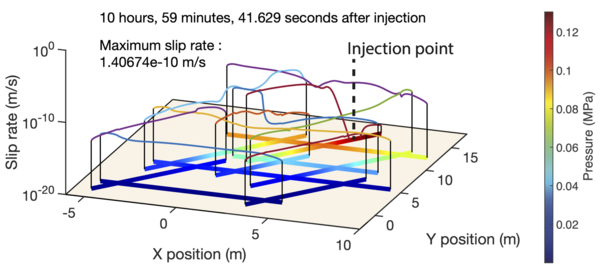A perspective on earthquake cycle modelling
The modelling of earthquake cycle, including, the stress build up during inter-seismic stage, the nucleation of earthquakes or slow slip events, their propagation and their arrest before building up again the stress, has undergone rapid improvement over the last decade. However it can be difficult to apprehend the use, power, but also drawbacks and limitations of the current earthquake cycle models. A key limitation lies in the validation of numerical models, which is hindered by sparse or inaccessible observational/experimental data. While models may reproduce observed phenomena, their predictive capabilities remain constrained. In this presentation, I will illustrate by examples, different uses of earthquakes cycle models and how they can help us to better understand the underlying earthquake physics.
• Complex fault geometry and fault networks
By presenting theoretical models and numerical simulations, I will illustrate the existence of a scaling relationship between fault geometry and slip distribution. Additionally, I will discuss how this relationship enables the prediction of slip patterns in PMMA experiments on non-planar faults, highlighting the predictive potential of this scaling in controlled experimental settings.
• Fluid injection and induced seismicity
The second part of my talk, I will focus on examples relevant to fluid injection underground. Indeed, the growing demand for energy, that push for green energy development, and the need to mitigate carbon dioxide (CO2) emissions has led to the development of technologies that involve the injection of pressurised fluids into the subsurface, like Enhance Geothermal Systems (EGS) or Carbon Capture and Storage. While these technologies provide substantial benefits in energy production and environmental management, they also introduce risks, particularly the potential for inducing seismic events. Recently, we have developed a coupled Boundary Element/Finite Volume Method that can simulate the injection of fluid in a network of faults. We have used it to show that although slow-slip propagation and micro-seismicity propagation may look like diffusion process, it does not mean that it provides information on the fluid injection process.
Through these examples, I aim to illustrate how earthquake cycle models can advance our understanding of fault dynamics and contribute to addressing critical challenges in society.

